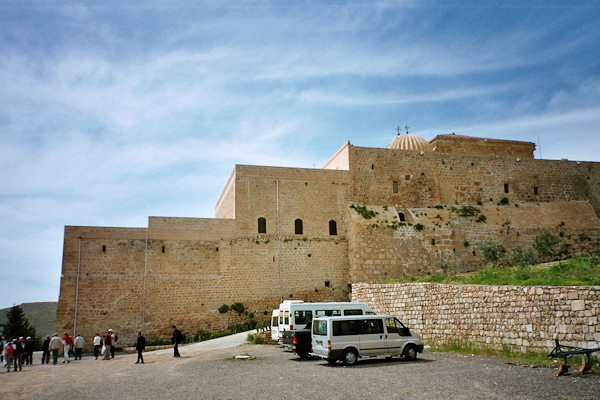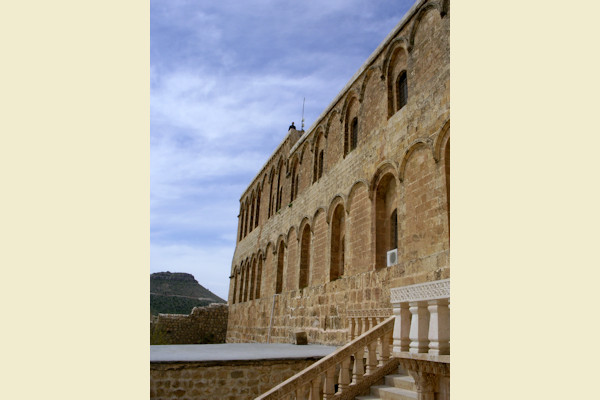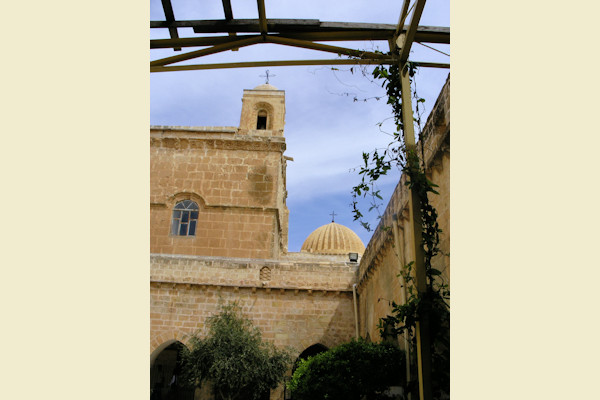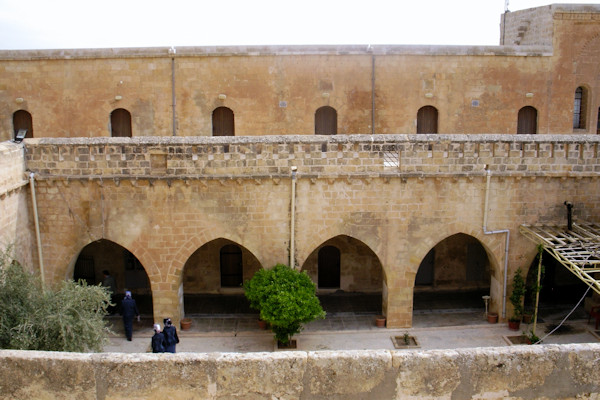The "Saffron Monastery" (also Dayro d-Mor Hananyo or Deir Az-Zafaran) is located seven kilometers southeast of Mardin.
Its name comes from the fact that allegedly yellow flowers of the saffron crocus were mixed into the mortar during the construction of the monastery in the 5th century. In 607 the monastery was destroyed by the Persians, then rebuilt. With interruptions, the patriarch of the Syrian Orthodox Church resided here from 1160 until the headquarters were moved to Damascus in 1932. Today an archbishop and some monks reside here again.
It is believed that a temple stood on the same spot as early as 2000 BC (a sun temple of the "Semses").
The origins of the Syrian Orthodox monastery probably come from St. Eugenius and date back to the 4th century. The first monastery was called "Mar Slemun". Then in 792 AD it was called "Mor Hananyo" after Ananias (Hananoy), later DeyrulZafaran.

The site is surrounded by a high wall. The actual monastery consists of a large, rectangular, three-story building complex. Most of the buildings date back to the 19th century.
The monastery is supplied with water by ancient canals from the mountains.
At the back of the courtyard there are three churches: St. Mary's Church dates from the 6th century, the main church (Mor Hananyo) was donated by Emperor Anastasios I (491-518), has a pyramidal roof and a bell tower added later, and houses the mausoleum-like Beit Qadishe (House of the Saints) burial chapel of the patriarchs.
It is believed that under the burial chapel there was a temple from pre-Christian Assyrian times, since a window, which has since been closed, focused the first sunlight of the day, and at that time the sun goddess was worshipped in this way. The vault, made of stone blocks, is self-supporting and does not need mortar. In the niches of the mausoleum above are the tombs of seven Syrian Orthodox patriarchs and metropolitans.
The main church has arches decorated in relief; the names of all the patriarchs since 792 AD are carved in the patriarch's throne. A service in Aramaic is held here daily.
Group picture in front of the monastery entrance with Archbishop Filüksinos Saliba Özmen
Photos from the tour of the monastery
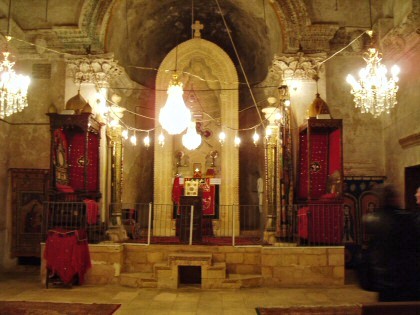
The altar in the main church
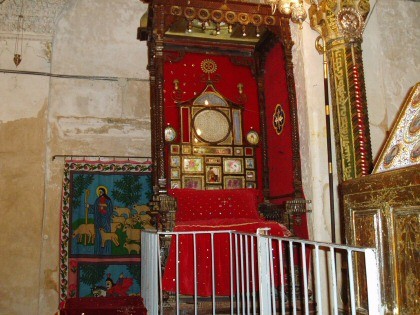
The left seat

Time table in snail form with the enumeration of the patriarchs starting in the year 37 until 1980.
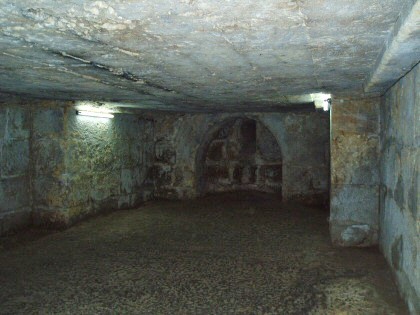
Was there once a sun temple here below the church ?
